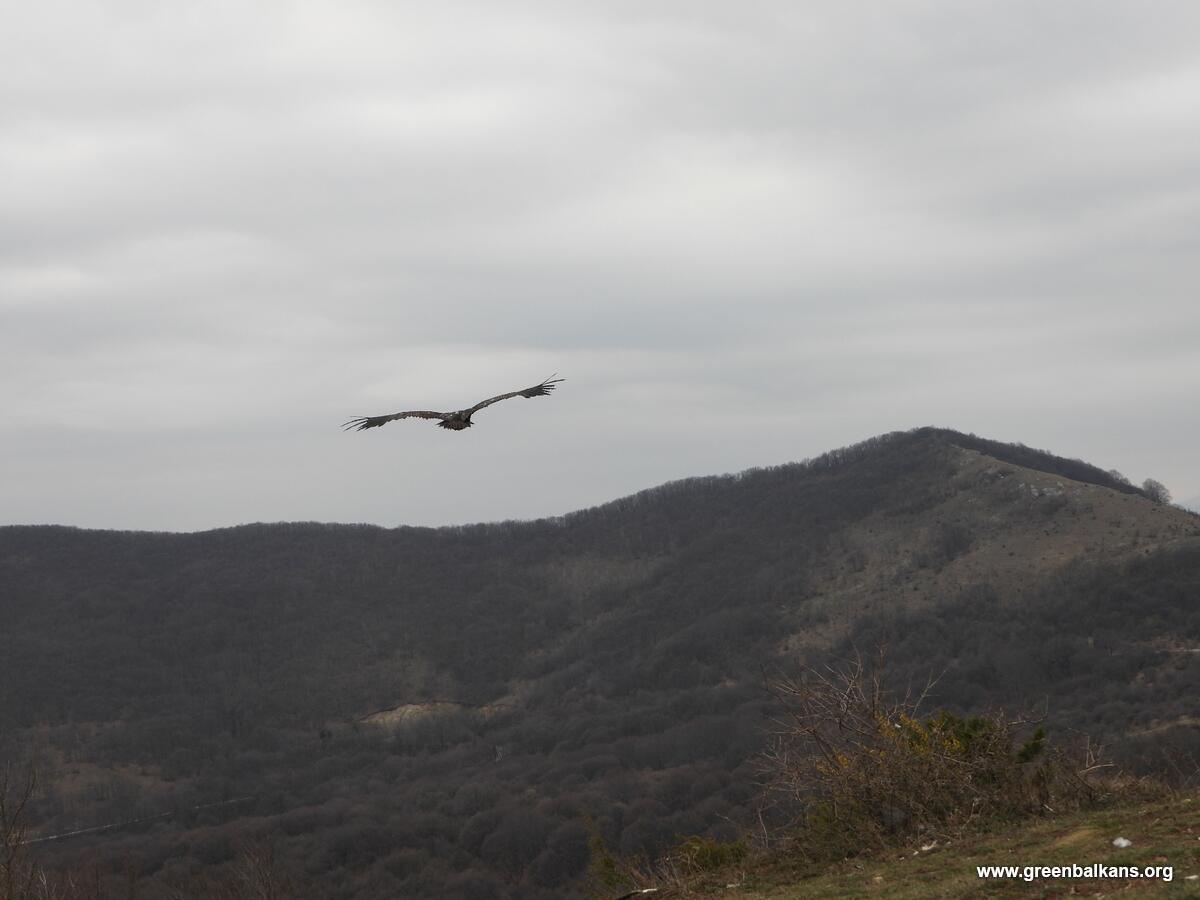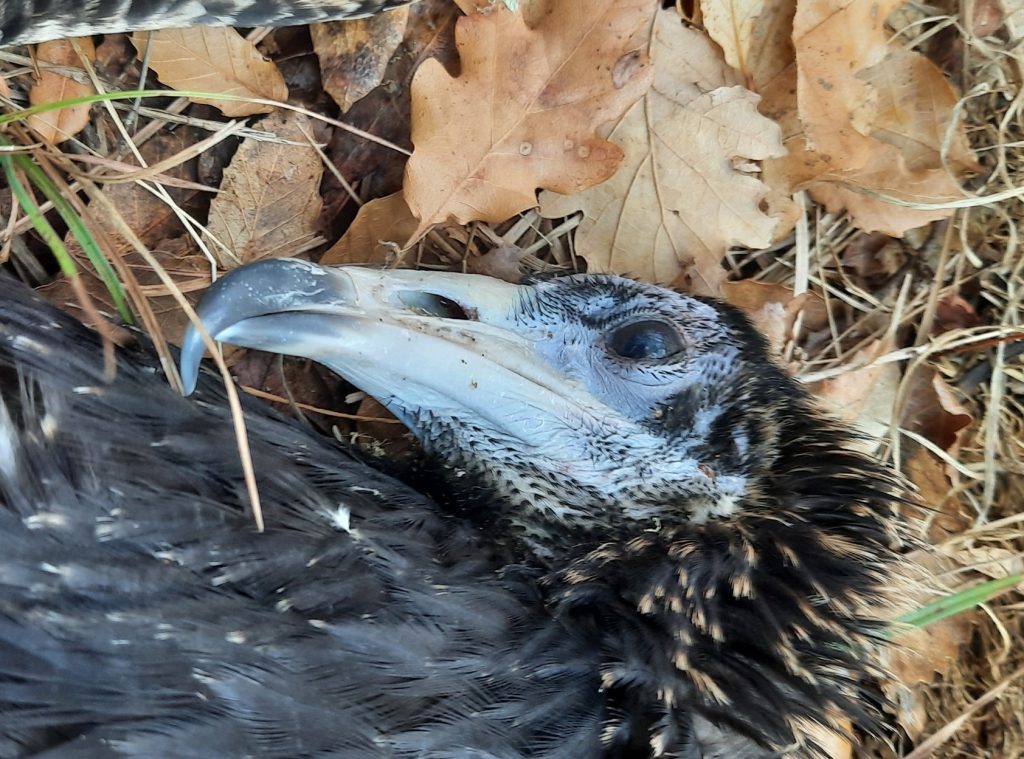
A new study confirms the negative impact of humans on large migratory birds, including vultures. Poisoning is still the worst threat to vultures in African-Eurasian flyways. In Europe, electrocution seems to be now the main cause of death for vultures, while in Africa illegal killing still has a very big impact.
Every year, millions of birds migrate along the African-Eurasian flyway, pushing the limits of their physical endurance and those of our imagination. While some of these migratory birds spread across relatively short distances – like the Bearded, Cinereous, and Griffon Vultures within Europe, and the White-backed and Hooded Vultures within Africa –, others cover immense distances, connecting different continents, as is the case of the Egyptian Vulture.
However, these great continental journeys are not without their dangers, as migratory birds have to negotiate hostile weather and overcome difficult geographical barriers, all while avoiding the growing dangers of human encroachment along their migration routes. Direct mortality related to increasing dangers such as poisoning, electrocution and collision with infrastructure, or shooting, has been increasingly recorded along the flyway, and researchers and conservationists believe that these deaths can have serious impacts on these bird populations and their conservation status.
A newly published research study, led by BirdLife International and in which the Vulture Conservation Foundation (VCF) was involved, puts in evidence the importance of human-related mortality on large migratory birds, including several species of vultures. Along the African-Eurasian flyway, these migratory birds were found to be 1.64 times more likely to die as a result of direct or indirect human action than from natural causes.
So what are the most important causes of mortality that this research team has identified?
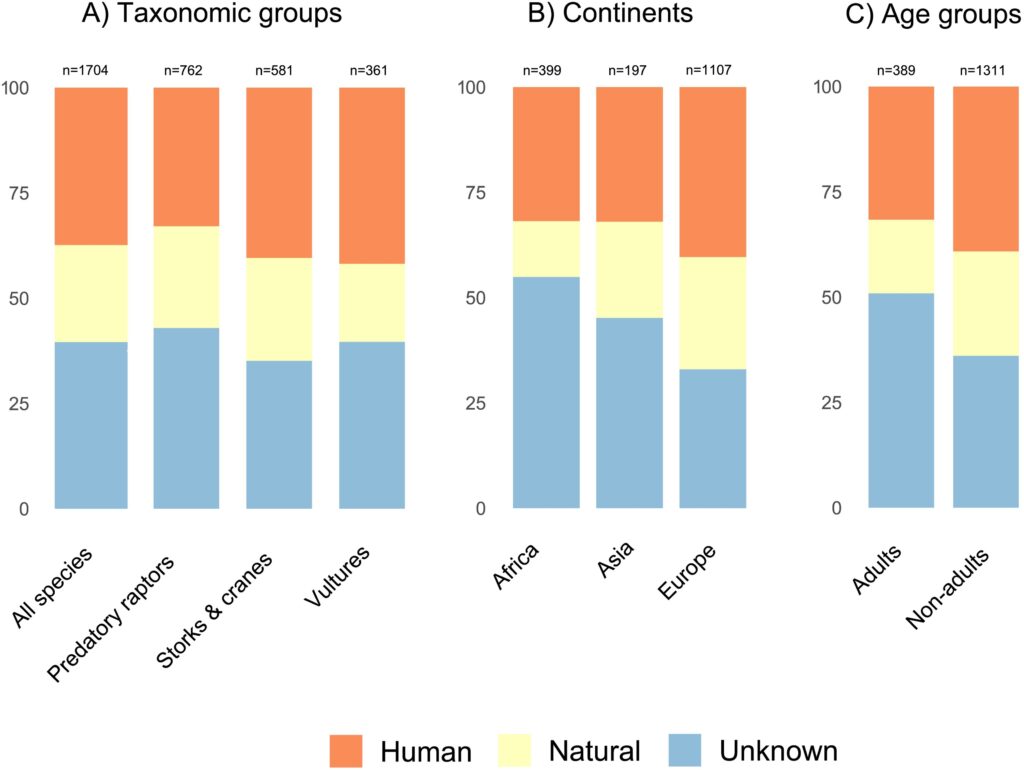
Identifying drivers of mortality for migratory birds along the flyway
The study took advantage of the wealth of existing bird tracking data that, despite their great potential to better understand mortality in migratory birds, is typically not analyzed or published by researchers to address this problem. By bringing together data from multiple species, the authors were able to highlight general patterns of mortality across species and continents, which are relevant to inform international conservation efforts.
Through extensive collaboration, the authors compiled 1704 mortality records for 45 species, collected through tracking over 4000 individual raptors, vultures, storks and cranes in the last 20 years.
“For vultures, poisoning was the main cause of mortality (39.74 %), followed by electrocution (25.83 %) and illegal killing (18.54 %).”
“Illegal killing had the highest prevalence as a cause of mortality in Africa (48.03 %), while electrocution was most prevalent as a recorded cause of mortality in Europe (47.2 %). Energy infrastructure-related mortality (i.e., electrocution, power line collision, and wind-farm collision combined) accounted for 48.98 % of all mortalities across all species combined.”
– Serratosa et al., 2024
This large collaboration confirmed the pervasive role that illegal poisoning and energy infrastructure have on large migratory birds, including vultures.
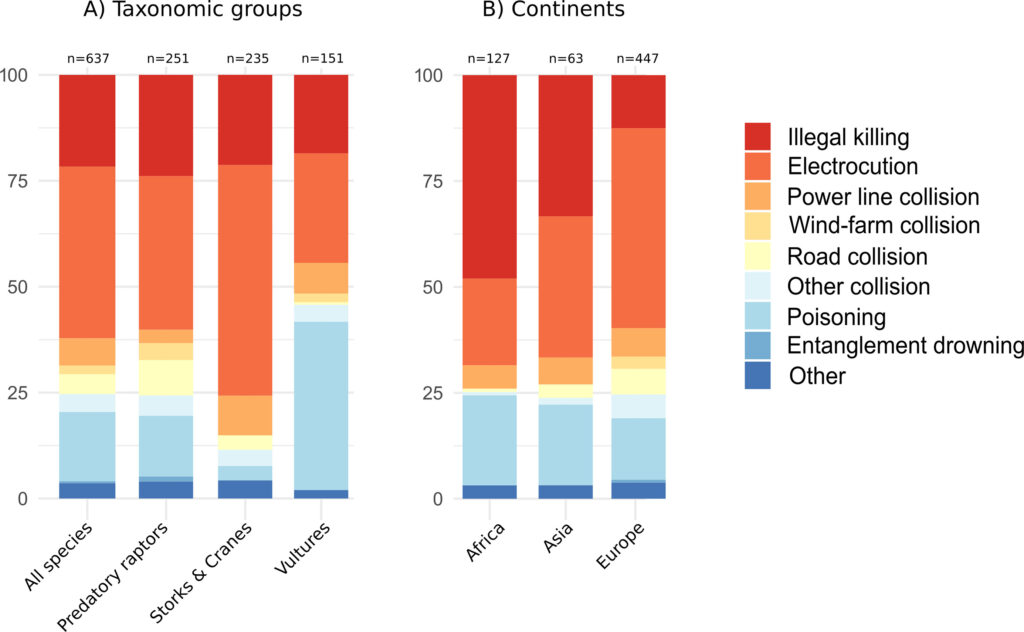
The pervasive effects of illegal poisoning
Because it is a non-selective method of killing “undesirable” animals – such as feral dogs, which often cause conflicts with humans – the use of poison is illegal, as often other wildlife such as vultures fall victim to poisoned baits or by feeding on dead poisoned animals. Unfortunately, this threat has increased in recent years across Africa with major impacts on the populations of different vulture species.
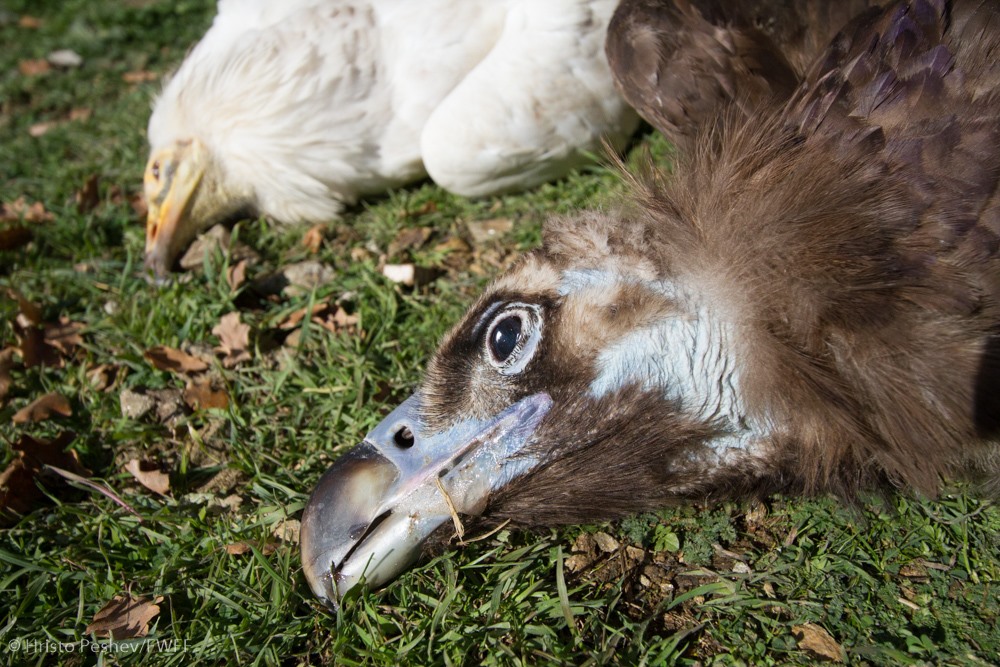
This study reiterates the importance of investing to strengthen the competence of the agencies responsible for monitoring and investigating the pervasive effects of illegal poisoning through, for example, robust law enforcement, awareness campaigns, and the involvement of local communities. This type of environmental crime must therefore be a priority for the local authorities in each country and the international community.
On the other hand, in Europe, and particularly in the Balkans, progress has been made in stamping out the scourge of vulture and other wildlife poisoning, including VCF-lead projects such as the BalkanDetox LIFE.
The effects of energy infrastructure expansion
The expansion of renewable energy is key for the energy transition at the global scale. However, the development of this infrastructure is placing a heavy burden on large migratory birds along their migration routes. Large wind farms such as those existing and planned in migratory hot-spots where thousands of birds gather every year, like around Gibraltar in Spain and along the Red Sea in Egypt, constitute barriers to the free migration of vultures and other soaring species with implications for their survival.
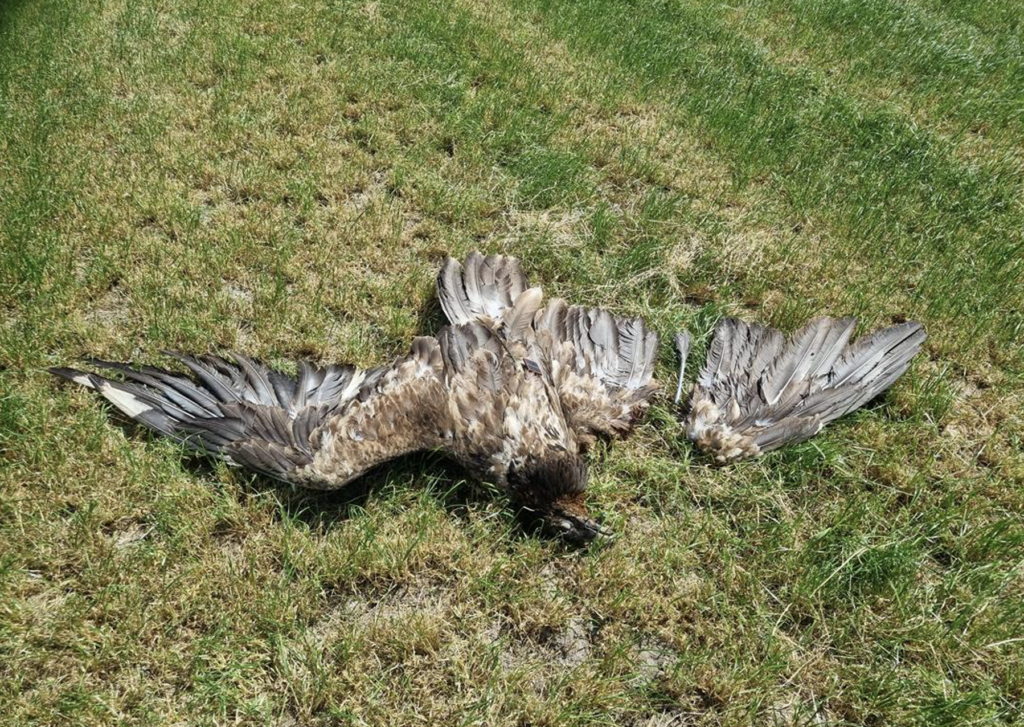
The investment and development in renewable energies will grow substantially in the coming decades, namely in onshore wind energy and the associated networks of transmission and distribution cables, which may have dramatic effects on the conservation of migratory vultures and other soaring birds. As the global energy network expands it is key to improve the existing guidelines for the responsible construction of these infrastructures and take advantage of the best research available. For example, simple yet effective actions such as insulating and marking power lines and shutting down wind turbines on-demand during bird migrations can reduce migratory vultures’ deaths related to these types of infrastructure. Furthermore, it is key that new developments are closely assessed and monitored in order to prevent direct impacts on wild and re-introduced populations.
Source: Serratosa et al. (2024): Tracking data highlights the importance of human-induced mortality for large migratory birds at a flyway scale. Biological Conservation. https://doi.org/10.1016/j.biocon.2024.110525

